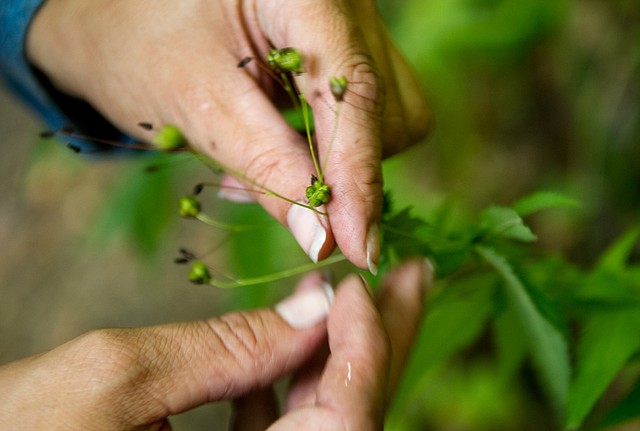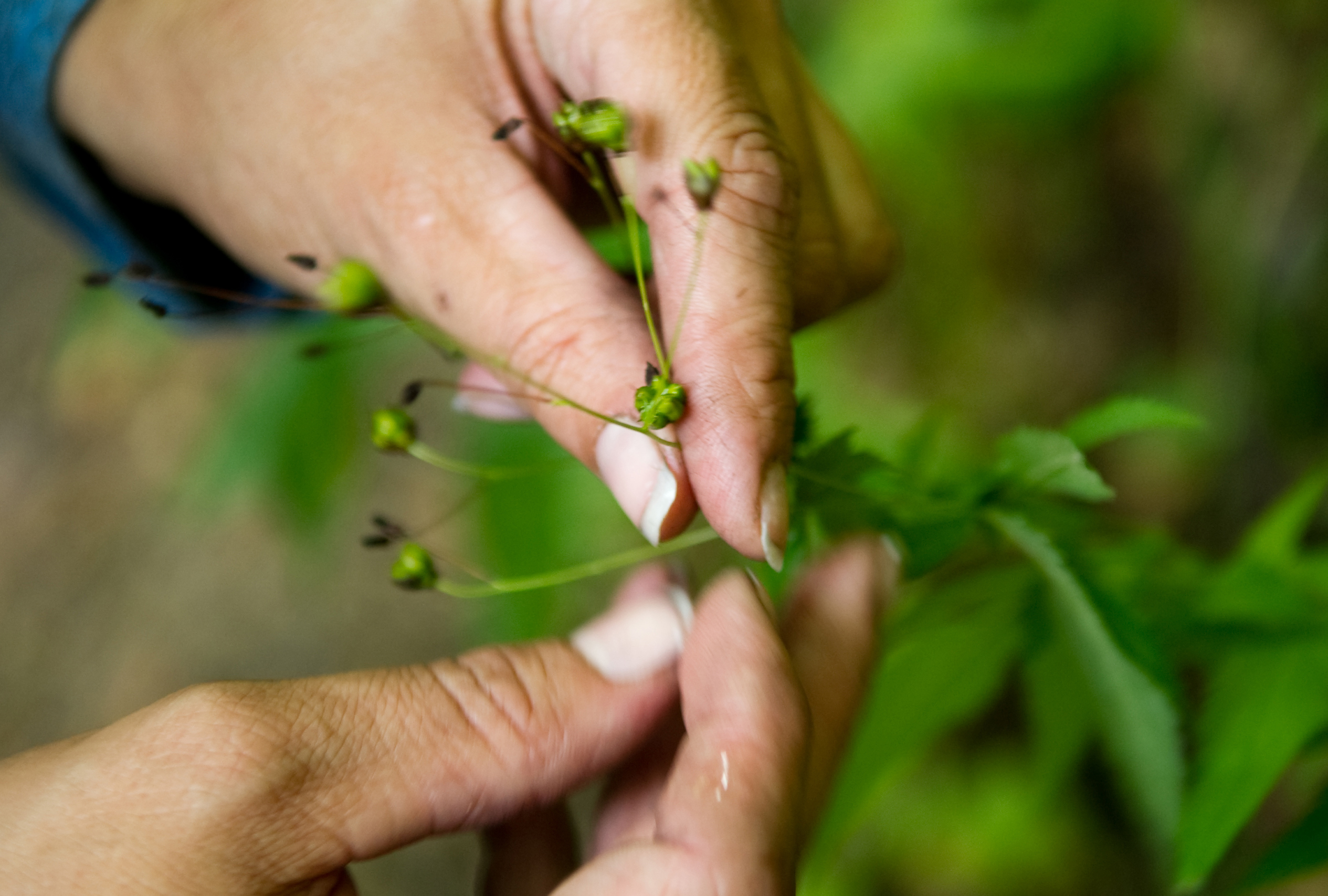Volunteers collect seeds native to Cumberland Trail
Monday, July 25, 2011
A few minutes from downtown Chattanooga is the North Chickamauga Creek Gorge State Natural Area, a 7,093-acre tract bisected by a 10-mile-long gorge with vertical sandstone walls and swimming holes that draw crowds in the summer.
Terri Ballinger is a seasonal naturalist with the Cumberland Trail State Park, and on a recent afternoon she and handful of volunteers paid a visit to North Chickamauga Creek to collect seeds. The state natural area is known for its rich assemblage of plants and, before long, the team was finding midsummer seed producers such as Indian pink, sharpwing monkey flower, whorled coreopsis and false Solomon's seal.
"We're focusing on the keystone species, the building blocks of a healthy forest," Ballinger said.
Last September the Cumberland Trail State Park embarked on a monumental effort to transform a pine plantation along the Cumberland Trail into a diverse upland forest typical of the Cumberland Plateau.
All the plant material used to rehabilitate the site will come from seeds collected locally at sites such as the North Chickamauga Creek Gorge State Natural Area and other nearby state-owned lands.
Funding for the project is provided by the Friends of the Cumberland Trail, with much of the manpower provided by groups such as the Master Gardeners of Hamilton County.
In addition to revegetating the pine site, seeds from the project are contributing to the Seeds of Success program established in 2001 by the Bureau of Land Management in partnership with the Royal Botanical Gardens, Kew Millennium Seed Bank. With these programs, seeds from all over the world are being preserved in cold storage so that native plants can be restored to areas hit by catastrophic events such as wildfires, or as an insurance against the threat of extinction resulting from climate change.
Tennessee State Parks currently is the only agency that's banking seeds from plants endemic to the Southeastern forest.
Seeds collected along the Cumberland Trail are being stored in refrigerated containers at the Bend Seed Extractory, a U.S. Forest Service facility in Bend, Ore.
So far, volunteers have completed about 170 miles of the Cumberland Trail. When completed, the footpath will stretch 300 miles from Cumberland Gap National Historical Park to Chattanooga following the east side of the Cumberland Plateau. The trail is open to the public in discontinuous segments that tie into public lands such as state parks and wildlife management areas.
The Re-seeding the Cumberlands pilot project is taking place at a 500-acre site called Barker Camp that's part of 3,000 acres that Bowater Inc. sold to the state several years ago. The site so far has undergone some prescribed burning to prepare it for the seeding and planting process. Compared to the thick summer canopy of the nearby deciduous forest, the acreage that was in pine production looks like a wasteland.
Ballinger said nursery stock from commercial greenhouses would have a hard time surviving in such harsh conditions.
"The first step is to get rid of the invasives," Ballinger said. "The soil has been acidified by the pines. Restoring the native vegetation will help improve the pH."
During the course of the project, the Cumberland Trail State Park will experiment with taking cuttings from different hardwood tree species and growing them out as a faster means than growing them from seed. And most importantly, all seeds and plant material will be collected locally to maintain the genetic integrity of the future forest.
Beginning this fall and winter, workers will sow the site with wildflowers and warm-season grasses. Wildlife will be drawn to the new fields, and after about 10 years, small shrubs should appear. When shrubs and trees greater than 4 inches in diameter form more than half of the canopy, the habitat's classification will shift from old field to early woodland.
Fifty years from now, the woods of Barker Camp will be indistinguishable from the oak-hickory forest interspersed with pines that surrounds much of the Cumberland Trail.
One of the volunteers helping collect seeds that day at the North Chickamauga Creek Gorge State Natural Area was Sally Wencel, board member of the Friends of the Cumberland Trail and one of the re-seeding project's most ardent supporters.
"You can't create instantly what it took nature a hundred years to produce," Wencel said. "I realize I won't be around to see the final result of all this, but it's exciting to be a part of it."

